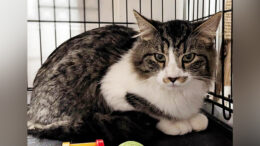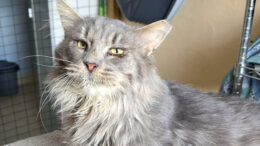This article discusses how to choose the perfect Christmas tree and keep it fresh.
There is no right or wrong species when it comes to choosing a Christmas tree. It all depends on your tastes and what is available locally. Bringing a freshly cut tree into your home, having it hold irreplaceable ornaments and bear witness to the most loving traditions within your family deserves a bit of research.
Most commercially available Christmas trees are harvested the first couple weeks of November. If you enjoy decorating your home as early as Thanksgiving or early December, you are challenging a tree to maintain its freshness in the warm, dry environment of our heated homes.
To optimize the length of time a tree looks its best, seek out the freshest tree, choose tree varieties which can take indoor conditions, and optimize the environment once the tree is brought into your home.
The freshest trees are farmed locally and harvested closer to Thanksgiving. Some of these farms allow you to cut your own tree or choose a tree they will cut for you. To locate a Christmas tree grower in your area, visit the Pennsylvania Christmas Tree Growers Association website(http://christmastrees.org).
Some of the most popular conifers grown for Christmas trees
Douglas-firs
Have soft, flat, blue-green needles that are attached singly to the stem. Their naturally symmetrical growth habit yields a full, attractive. Christmas tree, and their reputation for good needle retention makes Douglas-fir one of the most popular species to invite home for the holidays. The branches are moderately stiff and may not be suitable for the heaviest ornaments. Best of all, Douglas-fir has a sweet citrusy scent that most people enjoy.
Frasier and balsam firs
Have soft, flat, dark green needles marked by silver bands on the undersides. They are thicker than Douglas-fir needles, and are also attached singly to the stem. Their overall growth habit is a bit more stiff than that of a Douglas-fir, but quite attractive, and they also win praise for good needle retention. Their branches are moderately stiff and may not be suitable for the heaviest ornaments. The spicy, resinous fragrance makes Frasier and balsam firs holiday favorites.
White and Scotch pines
Have needles bundled into groups of five (white pine) or two (Scotch pine). They are tightly sheared when grown as Christmas trees to create a dense, full shape. Both are popular, traditional Christmas trees with good reputations for needle retention. Scotch pine is quite strong and will hold heavy ornaments with ease; white pine is more flexible and may not support the heaviest ornaments. Both perfume a room with a clean pine fragrance.
Colorado blue spruce
Have sharp, square needles that are attached singly to the stem. Valued for their blue-green to silvery blue color, Colorado blue spruce has gained popularity as a Christmas tree. They tend to have a symmetrical growth habit and hold the heaviest ornaments without complaint. They hold their needles well, but only if care is taken to make sure they never run out of water. Once they dry out, even once, many needles will fall. Another drawback is that their needles are very sharp – this is not a good selection for homes with small children.
Selecting a Fresh Tree
You can definitely be assured of getting a fresh tree if you cut your own tree from a local Christmas tree farm. While this is a cherished family tradition for many, the convenience of purchasing a pre-cut tree is more attractive for others. To check a pre-cut tree for freshness, look for flexible needles that remain firmly attached when you tug on them. All needled evergreens shed their oldest needles every year, so do not be concerned when brown needles fall from the interior of the tree when you knock the base of the tree on the ground. Just make sure they are thoroughly shaken off the tree before taking it indoors. If the needles pull out easily, or if they appear a dull, lifeless green, that tree may be past its prime.
Maintaining freshness
Maintaining a high moisture level in the tree is the single most important factor in reducing needle loss and keeping the tree fresh. This is accomplished primarily through the use of water-holding stands and keeping the water level in the stand above the base of the tree. Every year, there are many articles written concerning the handling and care of Christmas trees. Unfortunately, they often contain erroneous information.
These research-based guidelines will help you to maintain the freshness and aroma of your live Christmas tree this holiday season:
- Use a tree stand with an adequate water-holding capacity. A tree stand should have a water basin that provides 1 quart of water per inch of stem diameter. For most Christmas trees, the stand should hold at least 1 gallon of water. A cut tree will absorb a surprising amount of water, particularly during the first week, so replenish the water daily.
- The tree stand should fit your tree. Some stands have circular rings at the top, so the ring must be large enough for the trunk of your tree to go through the hole. Avoid whittling down the sides of the trunk to fit a stand. The outer layers of wood are the most efficient in taking up water and should not be removed.
- If the tree is to be stored for more than a couple of days before display, it is advisable to place its trunk in water and store it in a cool, shaded, and protected, area such as an unheated garage.
- If the tree has been cut within the past 12 hours, it will not be necessary to recut the trunk prior to display indoors. If it has been longer than 12 hours since harvest, the trunk should be recut to improve water uptake.
- Cutting off a disk of wood about ¼” thick from the base of the trunk is all that is necessary before putting the tree in the stand. Make the cut perpendicular to the stem axis. Don’t cut the trunk at an angle, or into a v-shape, which makes it far more difficult to hold the tree in the stand and also reduces the amount of water available to the tree.
- Keep displayed trees away from sources of heat (fireplaces, heaters, heat vents, and direct sunlight). Lowering the room temperature will slow the drying process, resulting in less water consumption each day.
- The temperature of the water used to fill the stand is not important and does not affect water uptake.
- Check the stand daily to make sure that the level of water does not go below the base of the tree. With many stands, there can still be water in the stand even though the base of the tree is no longer submerged in water.
- Drilling a hole in the base of the trunk does not improve water uptake.
- The use of “IV” type devices to supply water directly to holes drilled into the sides of the tree trunk is not as effective as displaying the tree in a more traditional, water-holding tree stand.
- Applying anti-transpirants to the tree does not have a significant effect on the rate of moisture loss. These products are marketed as a way to block evaporation from the foliage surface, but, in reality, they have little effect on a cut tree displayed indoors.
- Adding water-holding gels to the stand is not beneficial, and they can reduce the amount of water in the stand that is available to the tree.
- Do not use additives, such as floral preservatives, commercial tree preservatives, molasses, sugar, bleach, soft drinks, aspirin, honey, and other concoctions, in the water. Clean water is all that is needed to maintain freshness.
- Displaying trees in water with the proper care is much more effective in reducing fire hazards than spraying trees with flame retardants. Some flame retardants can damage needles and actually increase the rate of moisture loss from trees.
- Monitor your tree for dryness. Run your fingers across the needles to determine whether they are dry and brittle. If the needles break easily or fall off in your hand, the tree is dry and should be removed
Newer LED Christmas lights generate less heat than older types of lighting. Always turn the lights off when the tree is unattended.
After the holidays
When you are ready to take the tree down after the holidays, do not be in hurry to send it to a landfill. Evergreen boughs make a great mulch for perennial flowering plants that do not tolerate other mulches that can hold excessive moisture around their crowns. They can also be placed on the ground near bird feeders to create a little shelter for ground-feeding birds. Also, many communities have a special pick up or designate a drop off site for Christmas trees. They may hold a big community bonfire or grind the trees into mulch that can be used for the garden in spring.
Authors
Sandy Feather
Extension Educator, Green Industry
Expertise
Integrated Pest Management
Organic Land Care
Arboriculture
Ornamental Plant Identification & Usage
Native Plants
Rick Bates, Ph.D.
Professor of Horticulture
Expertise
Informal seed systems in Southeast Asia
Temperate zone woody plants
Christmas tree management
Extension and advisory systems for developing countires
Vincent Cotrone
Extension Educator, Urban Forestry
Expertise
Urban Forestry
Arboriculture
Urban Stormwater
Green Infrastructure
Urban Stormwater Management






























